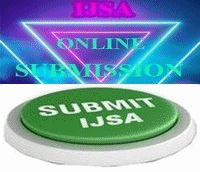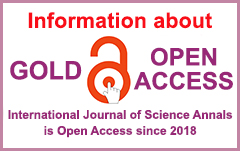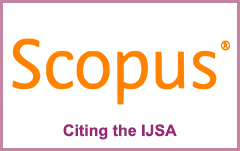| 1 Kharkiv National University of Internal Affairs, Ukraine 2 Kharkiv Regional Public Organization “Culture of Health”, Ukraine 3 Scientific Research Institute KRPOCH, Ukraine 4 Social-Psychological Center KRPOCH, Ukraine |
Abstract
Background and Aim of Study: The full-scale military aggression against Ukraine in February 2022 had an extremely negative impact on the psyche of its residents. This is especially felt by young people who should continue studying at universities in these difficult conditions.
The aim of the study: To identify the specifics of psychotraumatic impact in the conditions of war and martial law on university students and cadets, to detail their level of stress, anxiety and depression.
Materials and Methods: The study was conducted in November 2022 based on KNUIA, Ukraine. Respondents aged 20-27 were divided into 3 groups: 1) 115 cadets: 85.22% men and 14.78% women, who are outside of permanent deployment; 2) 107 students: 59.81% men and 40.19% women, who are forcibly displaced persons in Ukraine and abroad; 3) 103 students: 50.49% men and 49.51% women, located in Kharkiv and Kharkiv region. A Google-form questionnaire was used to study the level and nature of psychotraumatization. Data collection on the level of stress and its content was carried out using the DASS-21 tool.
Results: Among the group 3 respondents, the psychotraumatic impact is characterized by high tension and the specific weight of vital psychogenia. Severe and extremely severe manifestations of anxiety in group 3 students were 2-3 times higher than the similar indicators of groups 1, 2 respondents. Manifestations of depression among women are the highest in group 3 respondents. Stress was more expressed among men in all groups. Group 3 respondents had the highest stress indicators among men.
Conclusions: The negative impact of the war in Ukraine on the student youth’ mental health requires the active implementation of psychological assistance and psychoprophylaxis measures in accordance with the individual results of psychodiagnostics.
Keywords
mental health, psychotraumatic impact, anxiety, depression, stress, students, war
References
Alzaghoul, A., McKinlay, A., & Archer, M. (2022). Post-traumatic stress disorder interventions for children and adolescents affected by war in low- and middle-income countries in the Middle East: Systematic review. BJPsych Open, 8(5), e153. https://doi.org/10.1192/bjo.2022.552
Bodman, F. (1941). War conditions and the mental health of the child. British Medical Journal, 2, 486. https://doi.org/10.1136/bmj.2.4213.486
Gradus Research. (2022, October). Psykhichne zdorovia ta stavlennia ukraintsiv do psykholohichnoi dopomohy pid chas viiny [Mental health and the attitude of Ukrainians to psychological help during the war]. https://gradus.app/documents/307/Gradus_Research___Mental_Health_Report_full_version.pdf
Henry, J. D., & Crawford, J. R. (2005). The short-form version of the Depression Anxiety Stress Scales (DASS-21): construct validity and normative data in a large non-clinical sample. The British journal of clinical psychology, 44(Pt 2), 227–239. https://doi.org/10.1348/014466505X29657
International Federation of Red Cross and Red Crescent Societies. (n. d.). Mental health and psychosocial support. IFRC. https://www.ifrc.org/our-work/health-and-care/community-health/mental-health-and-psychosocial-support
Joshi, P. T., & O’Donnell, D. A. (2003). Consequences of child exposure to war and terrorism. Clinical Child and Family Psychology Review, 6(4), 279-291. https://doi.org/10.1023/b:ccfp.0000006294.88201.68
Kalaitzaki, A. E., Tamiolaki, A., & Vintila, M. (2022). The compounding effect of COVID-19 and war in Ukraine on mental health: Α global time bomb soon to explode? Journal of Loss and Trauma. https://doi.org/10.1080/15325024.2022.2114654
Karam, E., & Ghosn, M. B. (2003). Psychosocial consequences of war among civilian populations Current Opinion in Psychiatry, 16(4), 413-419. https://doi.org/10.1097/00001504-200307000-00007
KhNUIA Department of Military Training, & KRPOCH. (2022). Questionnaire for cadets (students) [Data set]. https://forms.gle/Yc4NndjdJp1io21E7
Melnyk, Yu. B., Pypenko, I. S., & Maslov, Yu. V. (2020). COVID-19 pandemic as a factor revolutionizing the industry of higher education. Rupkatha Journal on Interdisciplinary Studies in Humanities, 12(5). https://doi.org/10.21659/rupkatha.v12n5.rioc1s19n2
Melnyk, Yu., & Stadnik, A. (2018). Mental health of a personality: Diagnostics and prevention of mental disorders. International Journal of Education and Science, 1(3-4), 50. https://doi.org/10.26697/ijes.2018.3-4.37
Melnyk, Yu. B., Stadnik, A. V., & Pypenko, I. S. (2020). Resistance to post-traumatic stress reactions of vulnerable groups engaged in pandemic liquidation. International Journal of Science Annals, 3(1), 35–44. https://doi.org/10.26697/ijsa.2020.1.5
Melnyk, Yu. B., & Stadnik, A. V. (2021). The impact of psychological transformation game “My Dao” on value orientations of participants. International Journal of Science Annals, 4(2), 21–29. https://doi.org/10.26697/ijsa.2021.2.3
Melnyk, Yu. (2019). The influence of educational, physical cultural and healthy work on the formation of the health culture of master’s students. Journal of Physical Education and Sport, 19(1), 219–226. https://doi.org/10.7752/jpes.2019.s1033
Mesa-Vieira, C., Haas, A. D., Buitrago-Garcia, D., Roa-Diaz, Z. M., Minder, B., Gamba, M., Salvador, D. Jr., Gomez, D., Lewis, M., Gonzalez-Jaramillo, W. C., Pahud de Mortanges, A., Buttia, C., Muka, T., Trujillo, N., & Franco, O. H. (2022). Mental health of migrants with pre-migration exposure to armed conflict: a systematic review and meta-analysis. The Lancet. Public health, 7(5), e469–e481. https://doi.org/10.1016/S2468-2667(22)00061-5
Michalek, J., Lisi, M., Binetti, N., Ozkaya, S., Hadfield, K., Dajani, R., & Mareschal, I. (2022). War-related trauma linked to increased sustained attention to threat in children. Child Development 93(4), 900-909. https://doi.org/10.1111/cdev.13739
New Lines Institute for Strategy and Policy, & Raoul Wallenberg Centre for Human Rights. (2022, May). An independent legal analysis of the Russian Federation’s breaches of the genocide convention in Ukraine and the duty to prevent. https://newlinesinstitute.org/wp-content/uploads/English-Final-FINAL-Report-updated-citations-1.pdf
Psychology Foundation of Australia. (2022, June 222). Depression anxiety stress scales (DASS). UNSW Sydney. https://dass.psy.unsw.edu.au/
Shevlin, M., Hyland, P., & Karatzias, T. (2022). The psychological consequences of the Ukraine war: What we know, and what we have to learn. Acta Psychiatrica Scandinavica, 146(2), 105-106. https://doi.org/10.1111/acps.13466
UNICEF. (2022, August 22). Mental health and psychosocial support in emergencies. https://www.unicef.org/protection/mental-health-psychosocial-support-in-emergencies
Veronese, G., Pepe, A., Diab, M., Abu Jamei, Y., & Kagee, A. (2022). Social support, resilience, and mental health in a low-intensity warfare context: the effects of siege on university students in Gaza. Journal of Mental Health, 31(3), 383-391 https://doi.org/10.1080/09638237.2021.1979486
Stadnik Anatoliy Volodymyrovych (Corresponding Author) – https://orcid.org/0000-0002-1472-4224;
Melnyk Yuriy Borysovych – https://orcid.org/0000-0002-8527-4638; Doctor of Philosophy in Pedagogy, Associate Professor; Chairman of Board, Kharkiv Regional Public Organization “Culture of Health” (KRPOCH); Director, Scientific Research Institute KRPOCH, Ukraine
Babak Serhiy Anatoliyovych – https://orcid.org/0000-0002-2248-454X; Doctor of Philosophy in Military Science, Senior Researcher, Head of the Department of Military Training, Kharkiv National University of Internal Affairs, Ukraine
Vashchenko Ihor Vladyslavovych – https://orcid.org/0000-0002-1444-7538; Doctor of Philosophy in History, Associate Professor, Associate Professor of the Department of Military Training, Kharkiv National University of Internal Affairs, Kharkiv, Ukraine
Krut Petro Pavlovych – https://orcid.org/0000-0003-4554-7870; Doctor of Philosophy in Philosophy, Associate Professor, Associate Professor of the Department of Military Training, Kharkiv National University of Internal Affairs, Ukraine
| |
APA
Stadnik, A. V., Melnyk, Yu. B., Babak, S. A., Vashchenko, I. V., & Krut, P. P. (2022). Psychological distress among students and cadets of universities in the war conditions. International Journal of Science Annals, 5(1-2), 20–29. https://doi.org/10.26697/ijsa.2022.1-2.0
Harvard
Stadnik, A. V., Melnyk, Yu. B., Babak, S. A., Vashchenko, I. V., & Krut, P. P. 2022. "Psychological distress among students and cadets of universities in the war conditions". International Journal of Science Annals, [online] 5(1-2), pp. 20–29. viewed 25 December 2022, https://culturehealth.org/ijsa_archive/ijsa.2022.1-2.0.pdfVancouver
Stadnik A. V., Melnyk Yu. B., Babak S. A., Vashchenko I. V., & Krut P. P. Psychological distress among students and cadets of universities in the war conditions. International Journal of Science Annals [Internet]. 2022 [cited 25 December 2022]; 5(1-2): 20–29. Available from: https://culturehealth.org/ijsa_archive/ijsa.2022.1-2.0.pdf https://doi.org/10.26697/ijsa.2022.1-2.0












